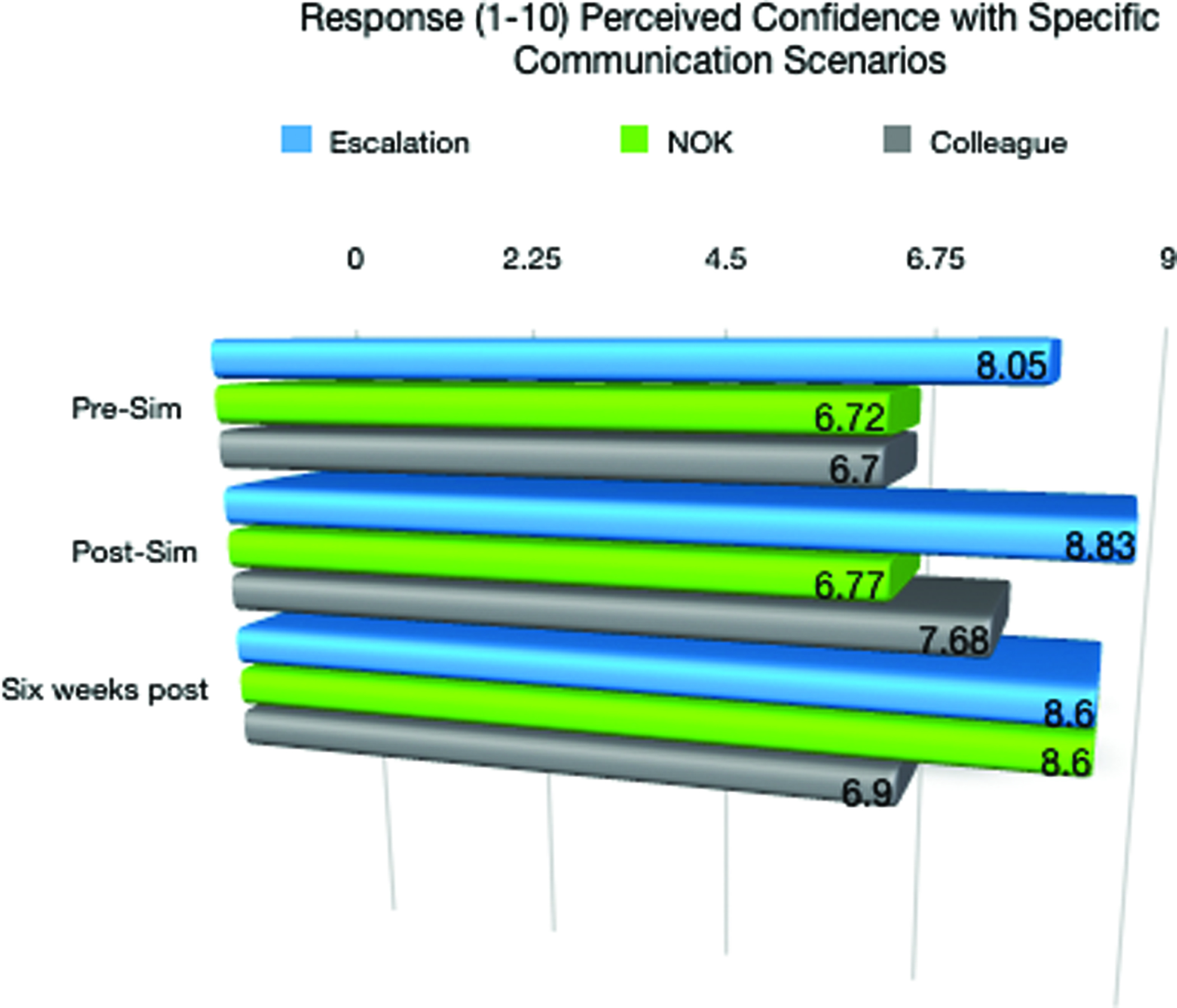
Training nurses to improve their ability and confidence to communicate effectively in difficult situations is beneficial [1]. Simulation is an effective method to replicate difficult communication situations with colleagues, family or patients and improves communication skills [2]. Iyasere et al., (2022) [2] determined improving perceived confidence to communicate increased team-performance specifically amongst nurses. The main purpose was to evaluate the effectiveness of using simulation-based communication scenarios to improve critical care nurses’ perceived confidence to communicate in difficult situations.
Fourteen (Band 5 and Band 6) critical care nurses attended three sessions of communication simulation. Participants were invited based on manager feedback either requiring improved communication or demonstrating excellent communication skills, an equal number from both spectrums attended each session. A diamond debriefing model was used after each scenario as the debriefing model provides reflection resulting in improved practice [3]. Debriefing was conducted by training simulation faculty. A survey was used to measure perceived confidence and ability to communicate in three difficult situations: escalating concern, next-of-kin communication (NOK) and colleague interaction. The survey was presented pre-, post-simulation and at six-weeks post.
Results showed an increase in confidence and ability to communicate in all three communication situations, as shown in Figure 1-A37. The largest improvement was within NOK communication, increasing from 6.73 to 8.77 (1-10 scale), the smallest change was ‘ability to escalate a concern’, however pre-simulation it achieved the highest level of confidence. Six-week post scores remained higher than pre-session ratings in all situations, but did drop slightly from post-session. Difficult communication with a colleague had the lowest score at each measurement interval.


Simulation-based training is an effective method to increase Critical Care nurses perceived confidence to communicate in demanding situations. Communication situations involving colleagues remains the most challenging communication scenario for nurses. Improving confidence to communicate is essential to effective team working and patient-centred nursing practice. Further study is needed but initial results suggest the method is beneficial to improve critical care nursing practice.
Authors confirm that all relevant ethical standards for research conduct and dissemination have been met. The submitting author confirms that relevant ethical approval was granted, if applicable.
1. Haugland VL, Reime MH. Scenario-based simulation training as a method to increase nursing students’ competence in demanding situations in dementia care. A mixed method study. Nurse Education in Practice. 2018;33:164–71.
2. Iyasere CA, Wing J, Martel JN, Healy MG, Park YS, Finn KM. Effect of increased interprofessional familiarity on Team Performance, communication, and psychological safety on inpatient medical teams. JAMA Internal Medicine. 2022;182(11):1190.
3. Scott O, Burton L, Bansal D, Attoe C, Cross S, Saunders A. The impact of debrief models on self-efficacy within mental health simulation training: A quantitative analysis. International Journal of Healthcare Simulation. 2023;